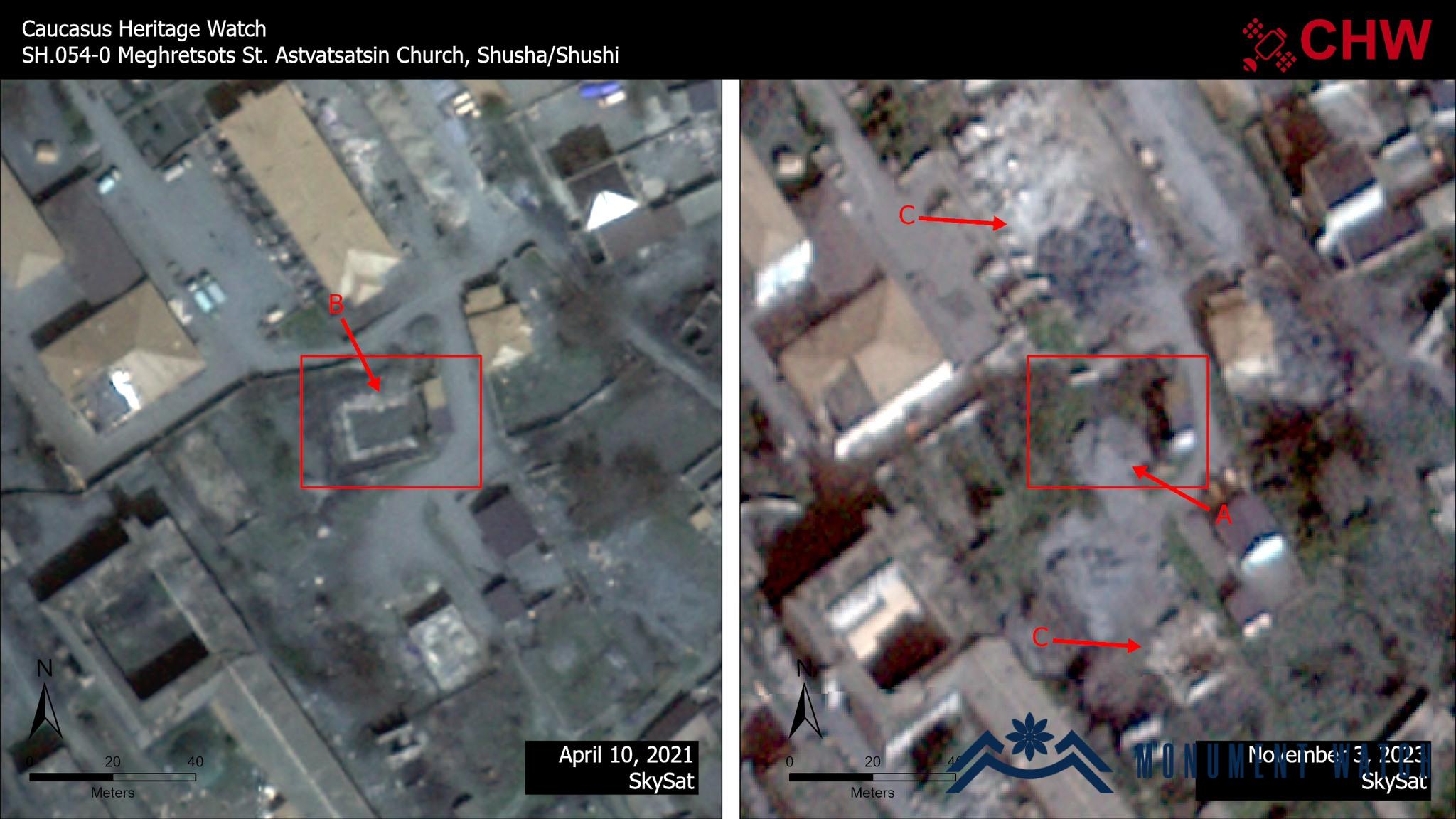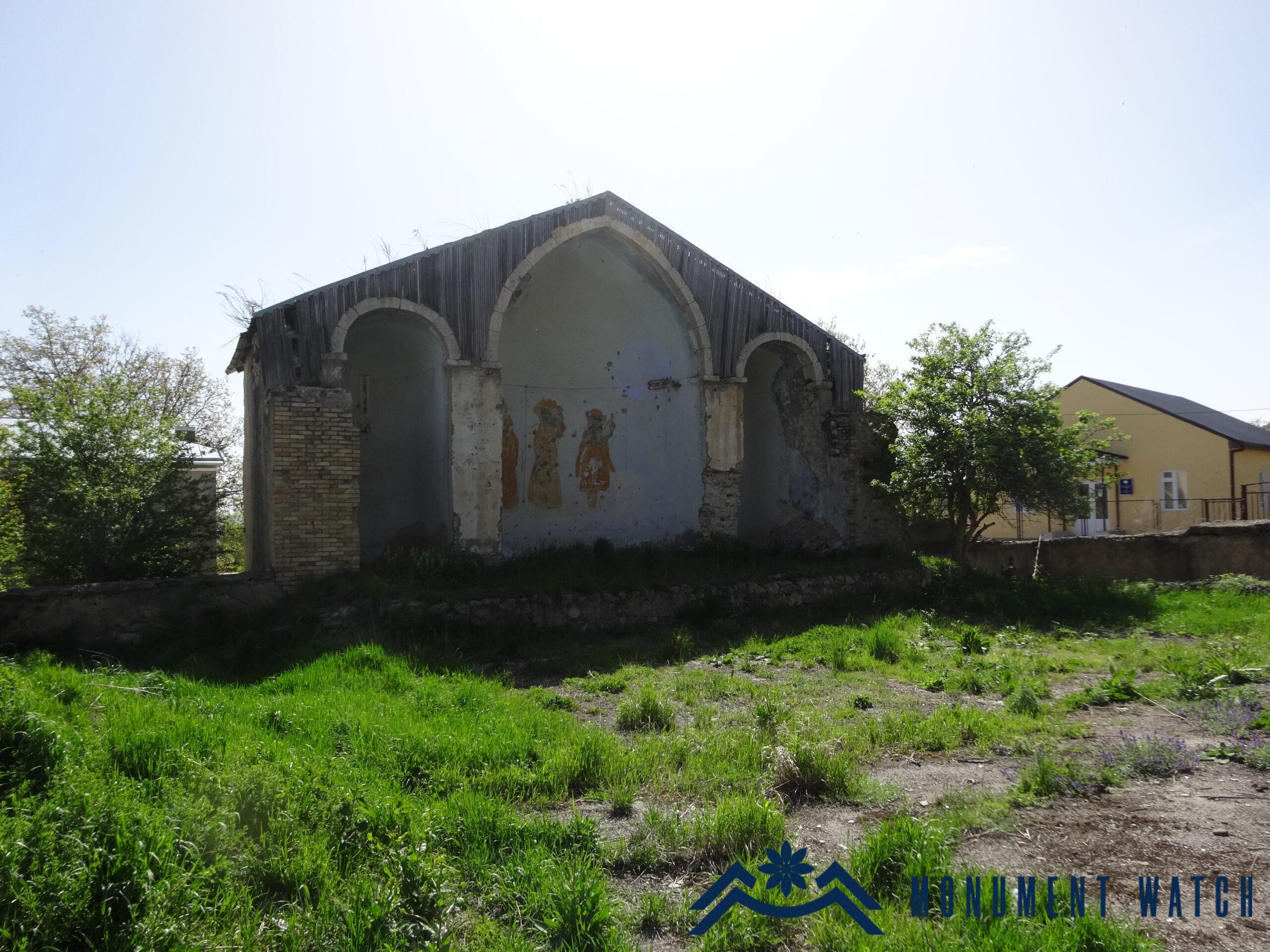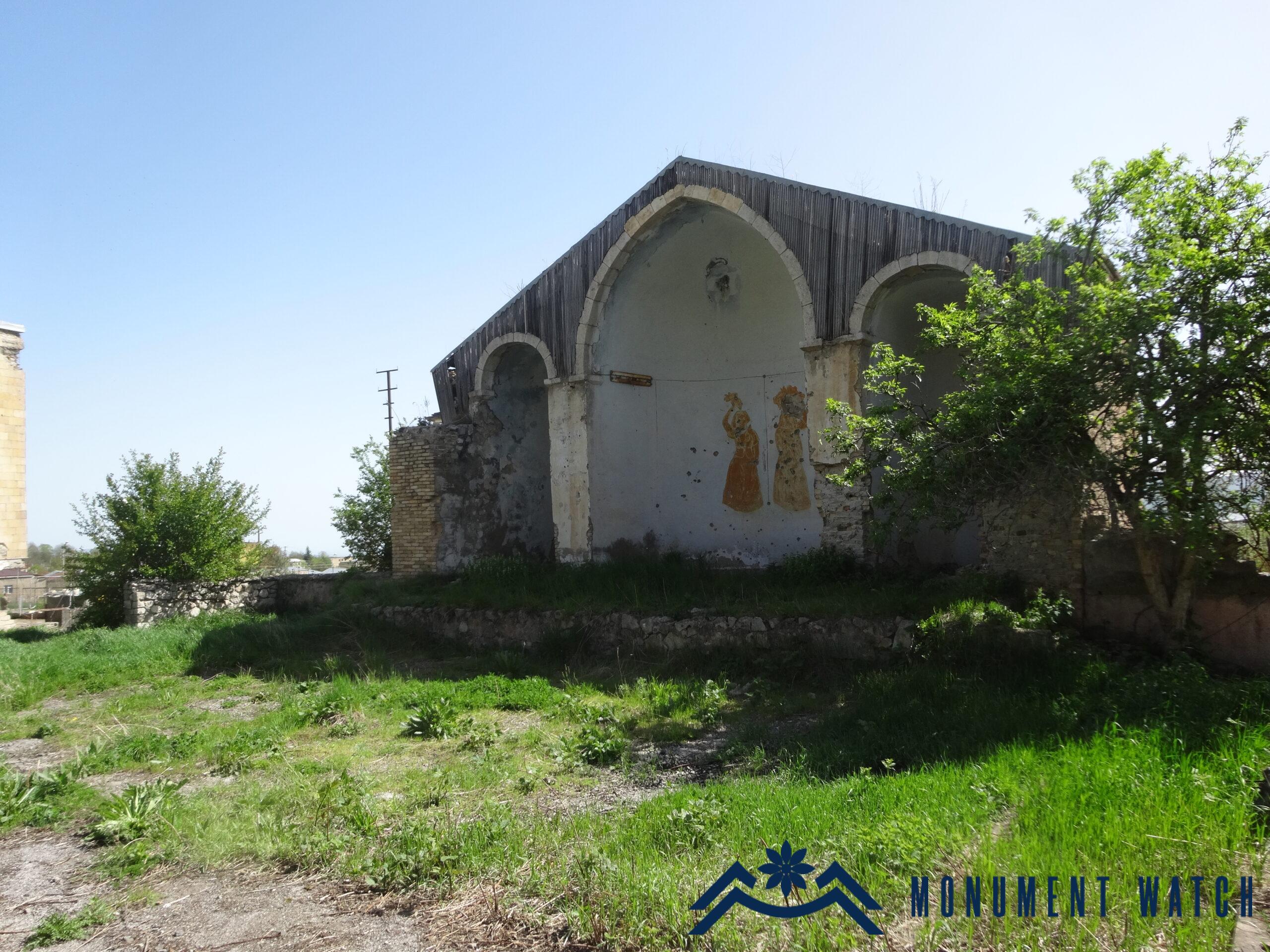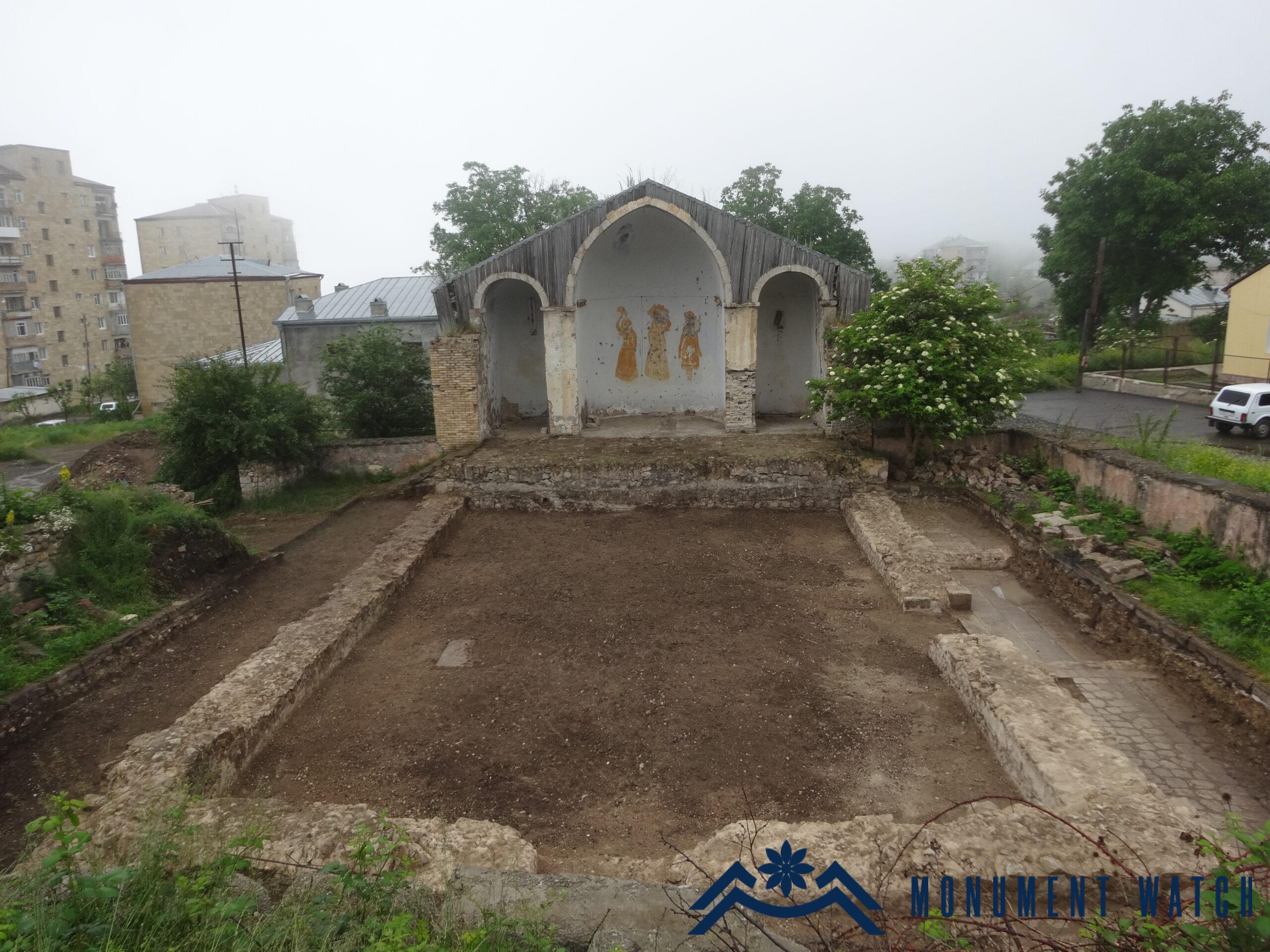Azerbaijan turns the historical layers of the 19th-century Meghretsots Surb Astvatsatsin Church of Shushi into a garbage heap
As evident from satellite photos released by the "Caucasus Heritage Monitoring"((https://caucasusheritage.cornell.edu) initiative, the remnants of the Meghretsots Surb Astvatsatsin Church in the city of Shushi have been harmed due to construction activities undertaken in the occupied city of Shushi (Fig. 1). According to the satellite photo taken on November 3, 2023, the Azerbaijani side utilized heavy machinery to deposit construction debris from the surrounding areas onto the foundations and structures of the church exposed during the excavations in 2017 (https://www.facebook.com/CaucasusHW/posts/pfbid02LpUY9LGKK6M2grQyGd2ondbAJ9zS4E6w5mZCDxG9KHJAnMwRS8P8HudEBng8UhKhl),
As far back as 2021, satellite photos have documented only the area becoming neglected and covered in grass.
Meghretsots Surb Astvatsatsin Church was constructed in 1838, funded by Mahtesi Hakhumyants (for details about the church, see: https://monumentwatch.org/en/monument/meghretsots-st-astvatsatsin-church/).
In the 1960s, the majority of the church's structures were dismantled by Azerbaijani authorities, repurposing it into a summer open-air cinema. It is noteworthy that, commencing from the 1960s, Azerbaijani authorities aggressively confiscated the cultural heritage of Shushi, intentionally altering the city's cultural identity to transform it into an Azerbaijani cultural center. As a consequence of this policy, the Armenian quarter of Shushi city and its monuments suffered substantial damage. The Amenaprkich Ghazanchetsots Cathedral in Shushi was brought to a state of disrepair, the Kanach Jam Church was repurposed into a mineral water drinking hall, and both the Kusanats Monastery and Aguletsots Amenaprkich churches were completely demolished and eradicated. In the same period, the Armenian cemetery in the city was obliterated by the Azerbaijani authorities. Concerning the Meghretsots Church, Azerbaijani authorities employed explosives to dismantle the majority of its walls, burying the remaining foundation walls exceeding one meter under asphalt (Mkrtchyan 1980, 155-161; Petrosyan 2010, 137-148).
In 2017, the archaeological expedition led by N. Yeranyan, a candidate of historical sciences, and the architect M. Titanyan from the 'State Service for the Protection of the Historical Environment' of the Artsakh Republic conducted excavations in the Meghretsots Church area. Before the excavations (Figs 2, 3), the entire area was covered with asphalt, revealing only the tabernacle and two sacristies (Yeranyan 2021, 498-502). Through the excavation process, the asphalt layer was removed, unveiling the foundations of the church (Fig. 4).
Our response
After seizing control of the city in November 2020, the Azerbaijani authorities are persistently pursuing a policy of destruction and appropriation of the historical and cultural heritage of Shushi, a process initiated back in the 1960s.
According to the decision of the International Court of Justice at The Hague on December 7, 2021, the destruction of Armenian churches has been prohibited. The decision states, "Azerbaijan is obligated to take all necessary measures to prevent and punish acts of vandalism and desecration that have been carried out against the Armenian cultural heritage"(International Court of Justice, Application of the International Convention on the Elimination of All Forms of Racial Discrimination (Armenia v. Azerbaijan), 7 December 2021, No. 2021/34). Furthermore, it should be emphasized that the harm inflicted upon the cultural assets of any given nation constitutes an impact on the cultural heritage of all humanity as each nation, through its unique contributions, enriches global cultural diversity. Per Article 4 of the 1954 Hague Convention for the Protection of Cultural Property in Time of Armed Conflict, any acts of vandalism, theft, robbery, misappropriation, hostilities, and reprisals against cultural heritage are strictly prohibited. Additionally, the first Hague Protocol of 1954 explicitly forbids the destruction of cultural or spiritual values in occupied territories.
The intentional destruction of cultural heritage is also strictly condemned by UNESCO's 2003 declaration, titled "On Deliberate Destruction of Cultural Heritage".
Sources used
- Yeranyan 2021 - Yeranyan N., Excavations of Meghretsots Surb Astvatsatsin Church, "Handes Amsoreai", No. 1-12, pp. 498-512.
- Mkrtchyan 1985 - Mkrtchyan Sh., Historical and architectural monuments of Nagorno Karabakh, Yerevan.
- Petrosyan 2010 - Petrosyan H., Cultural ethnocide in Artsakh (the mechanism of expropriation of cultural heritage), Azerbaijan's state terrorism and the policy of ethnic cleansing against Nagorno Karabakh, Shushi, pp. 137-148.
Photographs
Fig. 1 The church area in November 2023, photo: https://www.facebook.com/CaucasusHW/posts/pfbid02LpUY9LGKK6M2grQyGd2ondbAJ9zS4E6w5mZCDxG9KHJAnMwRS8P8HudEBng8UhKhl
Fig. 2 The area of the church before the excavations, photo by N. Yeranyan.
Fig. 3 The area of the church before the excavations, photo by N. Yeranyan.
Fig. 4 The area of the church after the excavations, photo by N. Yeranyan.



